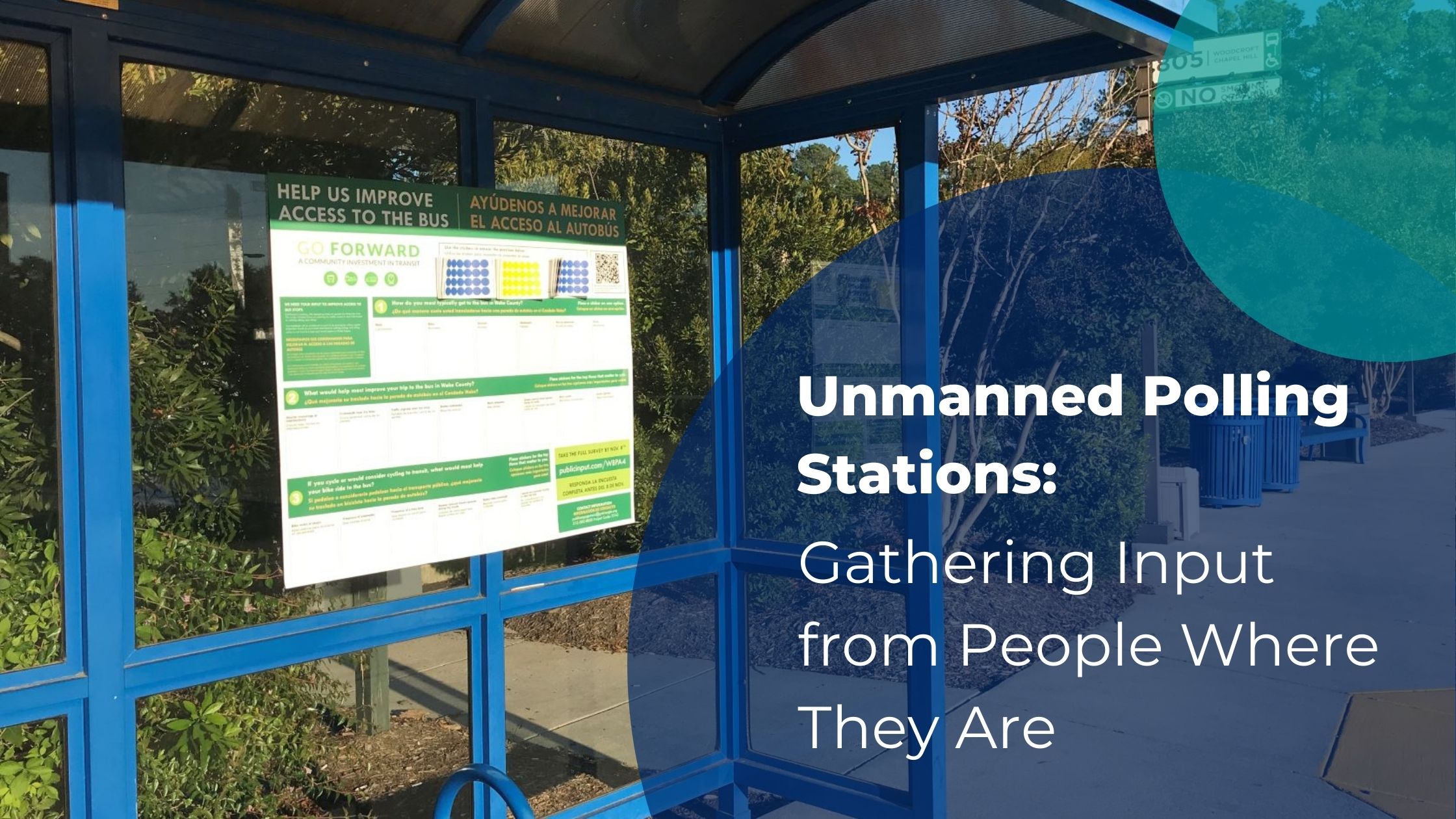
29 Mar Unmanned Polling Stations: Gathering Input From People Where They Are
Polling is one of the oldest forms of getting information from people. A style of polling that has significantly increased over the last few years is unmanned polling stations. Unmanned polling stations have no workers and involve a printed polling board where people can provide input using stickers, sticky notes, or other tools. These polls can be placed in many different places around the community such as libraries, bus shelters, and other frequented locations. These polling stations can be useful because they bring the polling information directly to the people.
Over the last few years, P3 has created and executed unmanned polling stations for a variety of projects. During outreach for the Wake Bus Planning process, we placed polling stations at bus shelters with high traffic throughout Wake County. This gathered over 2,600 responses from transit riders – residents who likely wouldn’t have been reached through our other outreach methods!
Creating the Polling Board
The first part of an unmanned polling station is the creation of the polling board itself. You want the polling station to be clear and easy for participants to follow. Here are some tips as to how to create an effective polling station:
- When creating the poll make sure that the project name and a brief overview are also included on the polling board. This will give the public a better understanding of why there is a polling station.
- An important part of the polling board is to make sure you ask the right questions. This means that the questions are asked in a way that will allow for the most accurate response. Multiple-choice questions tend to work the best for polling stations. For participants, multiple-choice questions will make it easier for them to quickly answer the questions. For you, this type of question will make it easier to organize the responses for analysis.
- Make sure to provide spaces large enough for multiple people to place their response under each answer.
- Provide a survey link or QR code for participants to complete the full survey to provide other comments.
- Provide contact information and the project website link, if available, for people who may have questions, want to receive project updates, or may want more information on the project.
Managing the Polling Station
Do research prior to placement of the polling boards. Consider locations within the community that are frequently visited and have high foot traffic, such as bus shelters. These things could help generate a good number of responses.
Since these polling stations are unmanned, it can be hard to keep track of the maintenance of the polls. A good way to help that is by checking on the polling stations periodically. Poll checks will ensure polling materials are securely posted, free of damages, and still available for participants.
Take pictures of the results every time the polling station is checked. This will be useful just in case the polling station is damaged or destroyed. In that case, the last known results can be given to and used by the project team without losing every single response.
Although polling stations can lead to many responses, sometimes it may take some time to get the results you may want. Consider leaving up the polling stations for a duration of time to allow for as many participants as possible.
Protecting the Polls
Keeping the polling station clean and clear is extremely important. If the polling station is outside, it is best to put the polling station in an area that is covered. An example of a protected area is a sheltered bus stop. A covered area can help with preventing weather damage.
Unmanned polling stations can be a very useful way of getting information from the public quickly and easily. Putting in the work for these polling stations will take some time but that time is worth it! Polling stations can reach people who wouldn’t normally be reached and gather valuable input for your project or planning process. Hopefully these tips have given you a good idea of how to create and manage an unmanned polling station.
About the Author: Broderick Pulliam has been contributing to Public Participation Partners as a Communications and Engagement Specialist since January 2022. Outside of work, Broderick enjoys podcasting, watching sports, and playing with his dog, Vinny.


Sorry, the comment form is closed at this time.